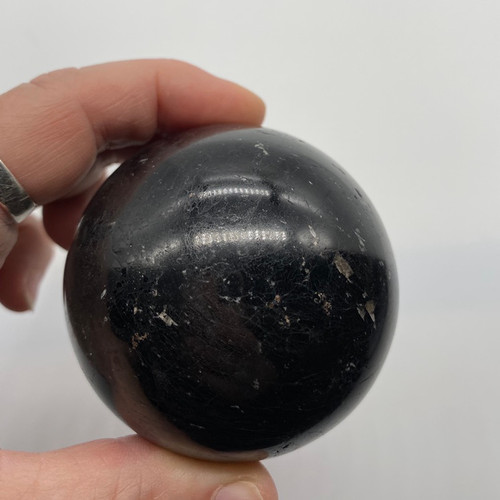Quartz Sphere with Black Tourmaline, Chlorite, and Iron
Measures Approximately: 3"
Weighs Approximately: 1 lb 3.1 oz
XXXXX
Quartz is the most common of the silica minerals. The group is all composed of silicon dioxide but have different crystal structures. The others form under specific conditions like very high temperatures. The name quartz comes from the German quarz, without a “t”. It may be derived from the Polish kwardy (“hard”). Pure quartz is colorless but trace metal inclusions can color it purple (amethyst), yellow (citrine), and brown (smoky quartz). It also forms in fibrous varieties without visible crystals like chalcedony.
Tourmaline is a group of boron silicate minerals that have a shared physical structure, but whose chemistry can be quite different depending on the type. It is one of the most colorful minerals, but "shorl", or black tourmaline, is one of the most common and popular varieties. Pink, green, and a combination of the two, or watermelon tourmaline, are also very popular.
The name chlorite refers to a group of related silicate minerals. The general term is used when the individual species is unknown. Although they can resemble mica by themselves, they often create landscape like inclusions inside quartz crystals. The name comes from Greek khloros ("green"), after their most common color.
Iron (Fe) included in quartz is ferruginous, colored red, yellow, or brownish orange by iron oxides like hematite and limonite. It may be natural or heated to enhance the color by reducing its water content like carnelian. The name is derived from the Greek haimatoeides (“resembling blood”).












